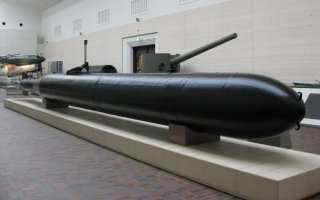Why Japan's World War II Kamikaze Torpedoes Failed
A combination of desperation, inaccurate self-evaluation and doomed romanticism fueled the program.
Kaitens sank a total of one destroyer escort, a fleet oiler and an infantry landing craft, causing the deaths of 187 U.S. servicemen. In return, besides the loss of 104 Kaiten pilots in training and operations, 846 submariners were lost on board the eight submarines sunk carrying them. An additional 156 technical staff were killed in action.
The Kaiten was worse than a suicide weapon—it had a lower success rate than regular torpedoes, and its limitations exposed Japanese submarines to detection, causing them to suffer punishing losses. Yet by the time the war ended, the Japanese Navy had invested even more resources into developing new types of Kaiten torpedoes, believing the unconfirmed but optimistic reports of their successes and disregarding the manpower and equipment lost.
A combination of desperation, inaccurate self-evaluation and doomed romanticism fueled the Kaiten program. The Kaiten pilots wished to sacrifice themselves on behalf of their country. But Imperial Japan, like many other countries in the throes of defeat, did not invest its remaining resources in men and material wisely. Millions died in the Pacific War, and consigning patriotic young men to pilot unreliable torpedoes to their certain death was just one addition to that vast waste.
Sébastien Roblin holds a Master’s Degree in Conflict Resolution from Georgetown University and served as a university instructor for the Peace Corps in China. He has also worked in education, editing, and refugee resettlement in France and the United States. He currently writes on security and military history for War Is Boring.
This article first appeared in December 2016.
Image: Wikimedia Commons


